
- Fashion
“Persuasion”: Dakota Johnson Trends ‘Today’ in an Updated Jane Austen Costume Design

Can Jane Austen fans be persuaded to love Netflix’s adaptation of her final novel Persuasion – starring Dakota Johnson (Anne Elliot), Henry Golding (Mr. Elliot) and Cosmo Jarvis (Captain Frederick Wentworth) Jane Austen’s Persuasion has critics all aflutter at the liberties taken by director Carrie Cracknell and costume designer, Marianne Agertoft (Poldark, Utopia, Les Misérables) that imbues the work with a current sensibility? This is established in the first beat of the film when Ms. Johnson in a voice-over refers to imbibing wine – which normally would evoke refined sips in glam surrounds with ostentatious clothing, but on this occasion finds her swigging from a bottle while languishing in a bath, which begs the question: did frustrated women revert to this kind of behavior in the 1800s – and who is to say they did not?

Given the limitations and restrictions on every aspect of womanhood of the day, one has to wonder why more women are not documented as succumbing to tippling. In Persuasion, Jane Austen has Anne Elliot give up her true love because of his lowly birth and lack of cash. Pining still, eight years later, Captain Wentworth returns with his prospects and bank balance on the rise. Into the mix comes the dashing Henry Golding whose on-screen presence reinforces his star appeal, a supporting cast of women to distract and integer in Cupid’s design and for those unfamiliar with Jane Austen’s work, suffice it to say that the romantic trope is in place.
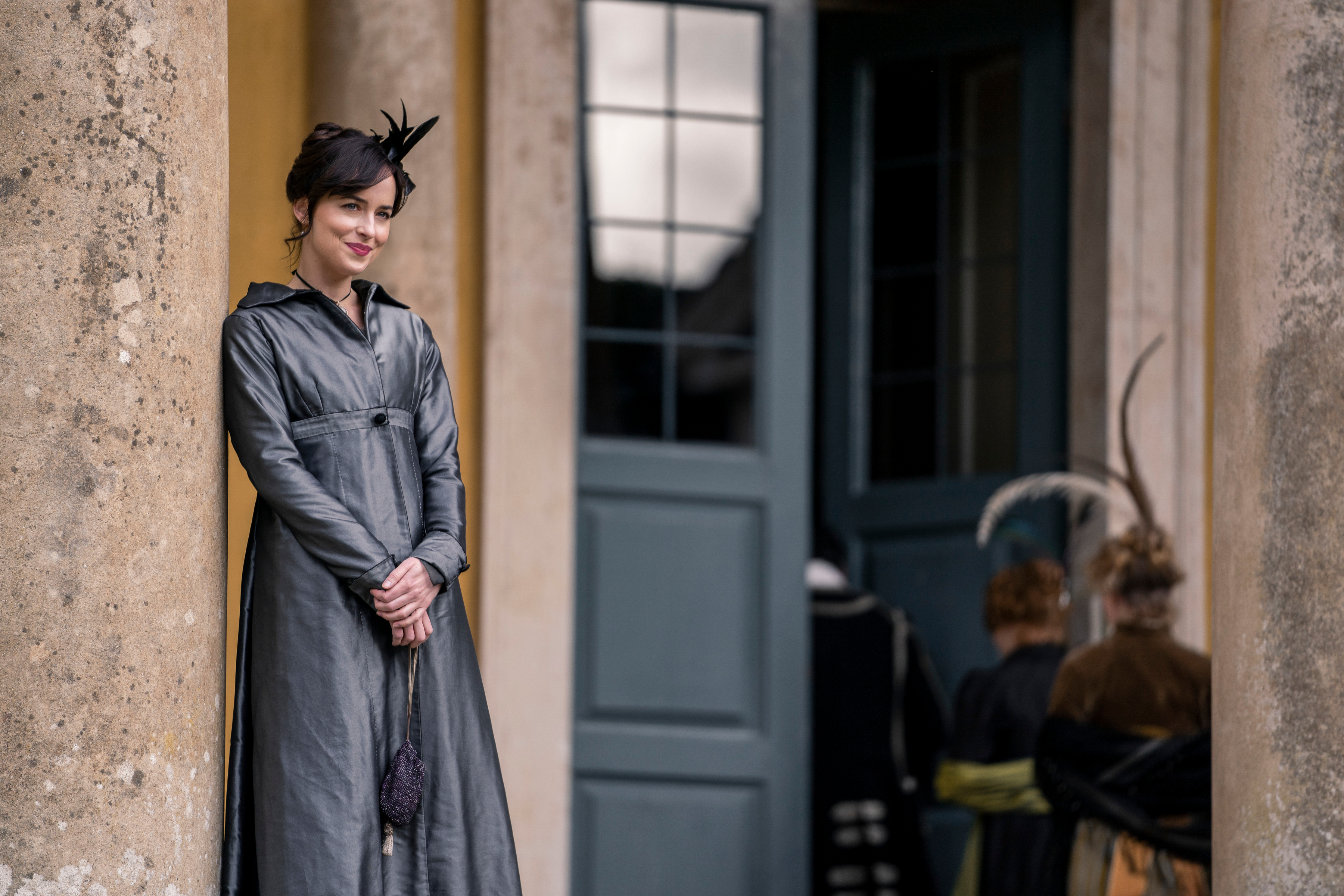
Liberties aside, the film elicits a delicious performance from Dakota Johnson (Fifty Shades of Grey) who underscores the vanities and outrage of dated concepts with moues and asides to the viewer. While audiences will vote with their time whether this works or not, what is indisputable is that Persuasion succeeds visually – and that much of that success is due to London-based Agertoft’s decision to pay homage to the Regency-era-fashion, but also to update the colors and the look of the costumes with a pared down palette of hues, accessories, and a bit of fudging on the breast-focused designs that trended 1811- 1820 when the Regent to the throne, Prince George ruled in the name of his father, King George II. The colors, particularly Dakota Johnson’s, ink cottons and silks are modern and pure. The liberty of slightly lowering the empire ‘waist’ – which was actually a band that held up the boobs with a hidden ruler running down the midriff, creates a free-flowing feel that is subtle and delightful to the eye – though no doubt constricting in its own way at the time of popularity.

Hmm – look familiar? If a fan of Bridgerton, you will recognize the empire style that is historically appropriate, but not religiously replicated in either that series or this film.
Seeded by the aristocracy of France, having survived the revolution, the silhouette moved away from the nipped waist and ostentatious flaunting of wealth through the wardrobe, that had flourished prior to the French bloodletting. A neo-classic simplicity was spread by Josephine Bonaparte, Lady Hamilton and Jane Austen, herself. One did not want to provoke a reminder of the class disparity possibly, but one did want to convey status through clothing. High necks got lowered. Simplicity in cut flourished, but when the occasion called for it, rich fabrics were employed. Here the Elliots are meeting a higher-status family they seek to impress, silks and lavish sheers are utilized on the women. Men touted richly embroidered waistcoats.
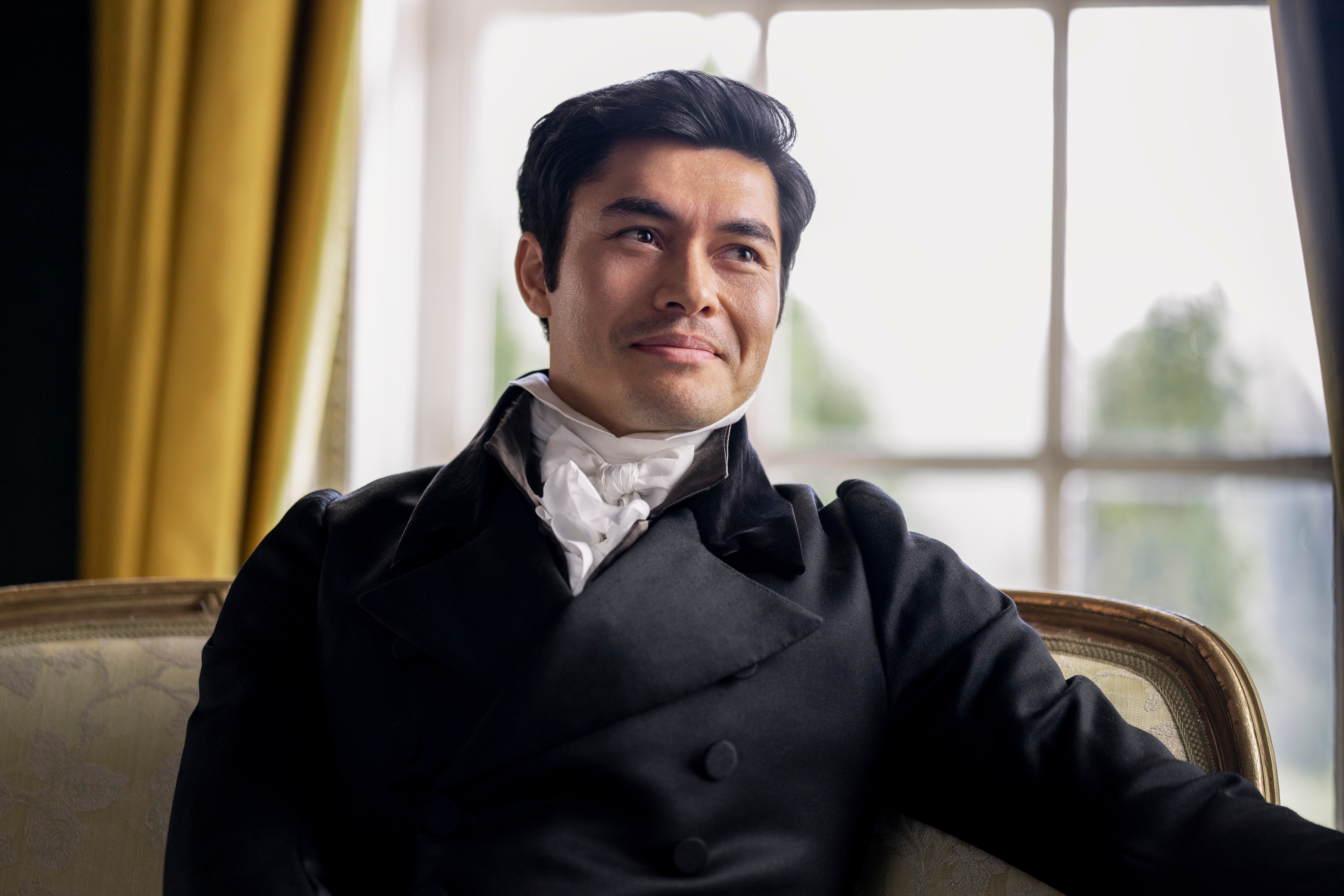
The dashing Henry Golding (Mr. Elliot) owns every scene in which he appears, brimming with swagger and confidence, his clothes reflect his standing. The jackets add emphasis to his shoulders. He is usually in classic black and white, with the appeal of someone who isn’t constricted by his clothes but wears them with flair. His coats often have a subtle sheen to them, even the linens.
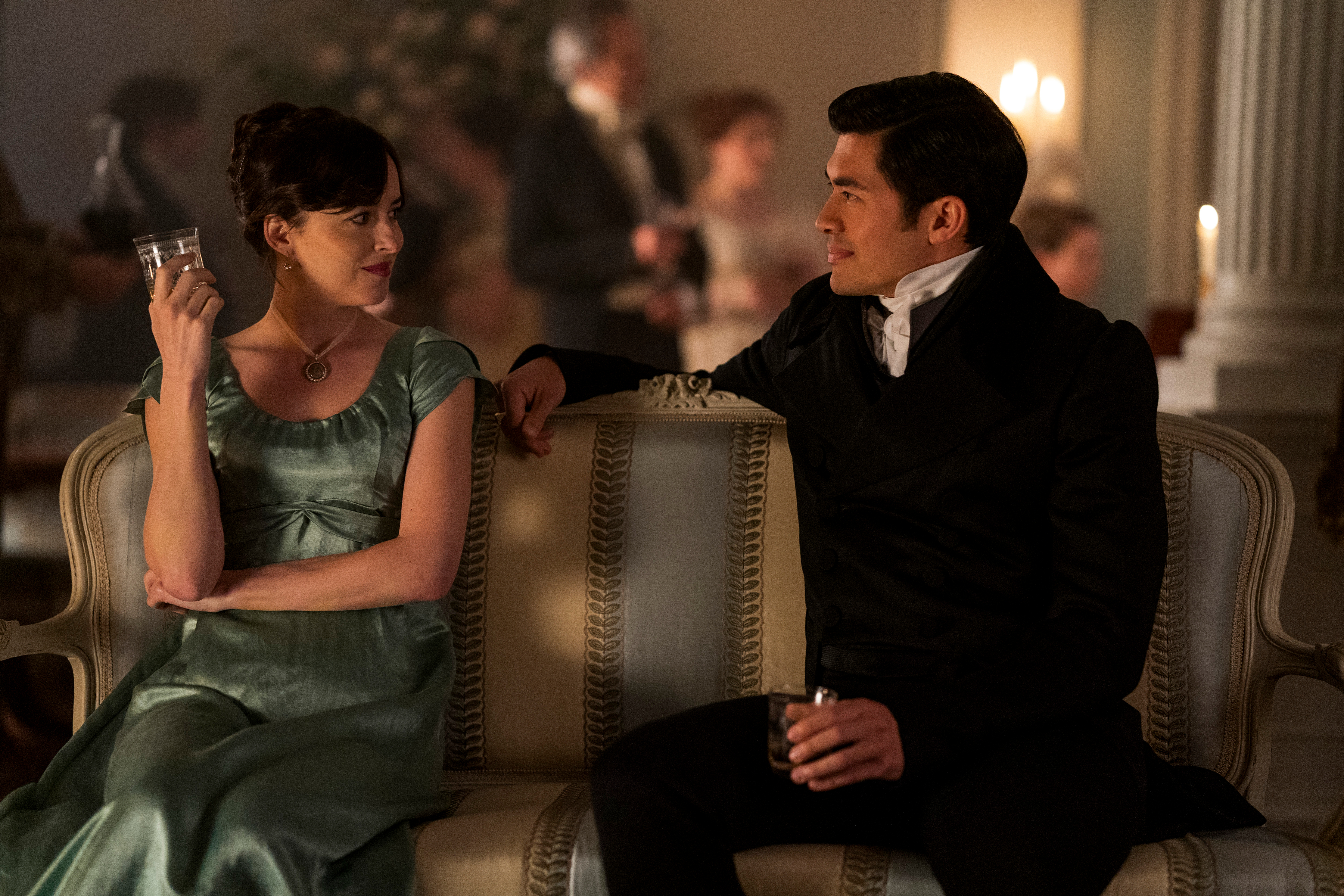
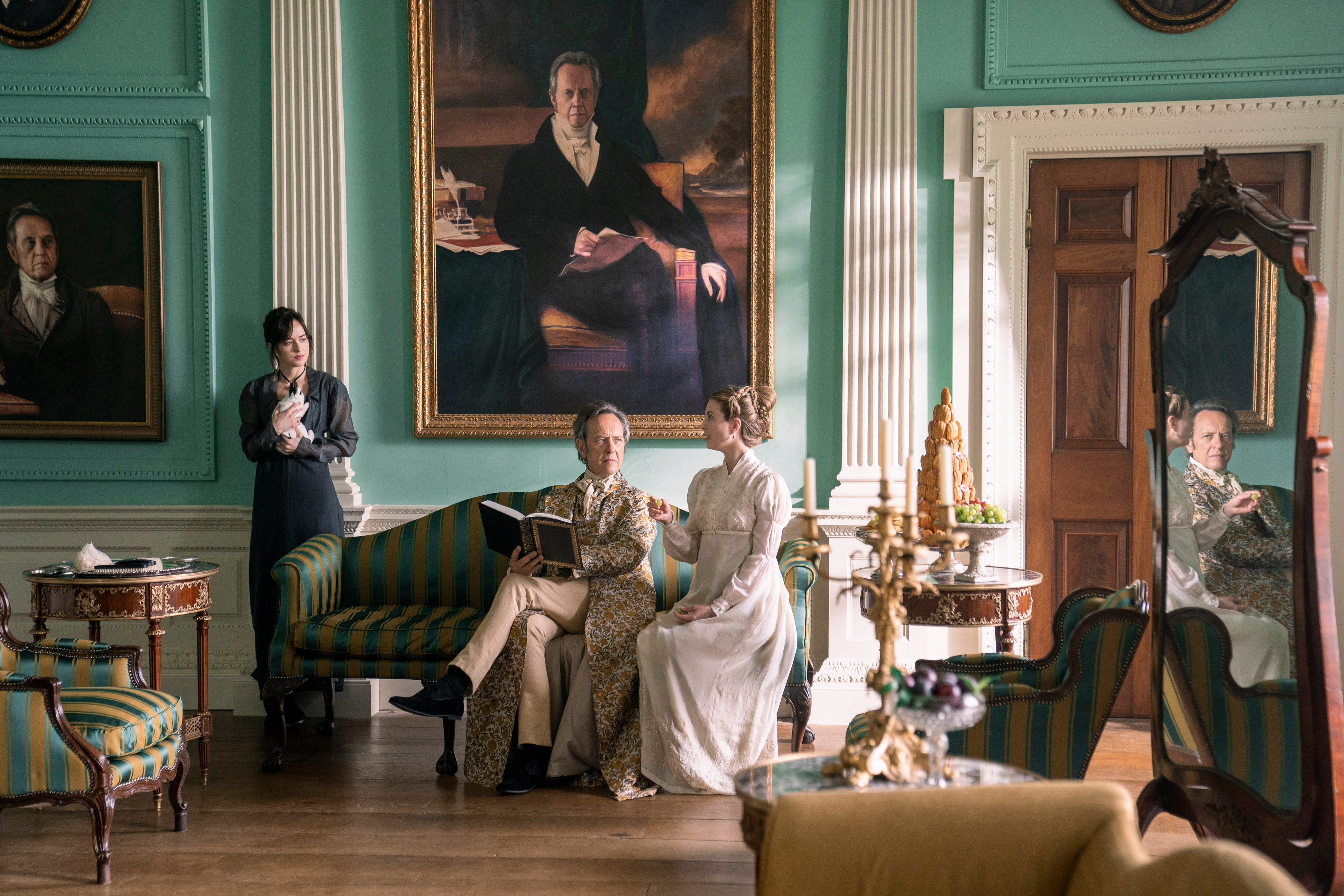
Hair was becoming more natural due to a tax on the hair powder that had been trendy. Women moved to chignons with ringlets framing the face. Johnson’s ringlets have a more modern feel with softer, looser curls. Her sister, on the other hand, has intricate, built-up chignons that raise above the crown and extend outward.
Richard E Grant is the peacock among the women here. The coat is exquisite in fabric and embossment – using the trick of fashionistas today – the neutral base cloaked with a statement piece. By contrast, the women are in neutral hues and a plainer fabric.
Note the introduction of opaque cotton and silk that allows a glimpse of arms without direct gaze.

Here we see the effectiveness of the specifically dyed thunder cloud hue that echoes the empire trend, yet modernizes it. The bodice is less fitted. The chignon is less elaborate, as are the tendrils – close to what influencers do with their hair in lightly applying product that allows the hot iron to create the coil but then fall into a ‘natural’ lock. The chest is on display and framed with a flat collar that brings the eye down to the dropped ‘empire waist’. Of note is the locket which is shown throughout the film paired with different ribbons and silk ties. The locket holds the photograph of Anne Elliot’s deceased mother.

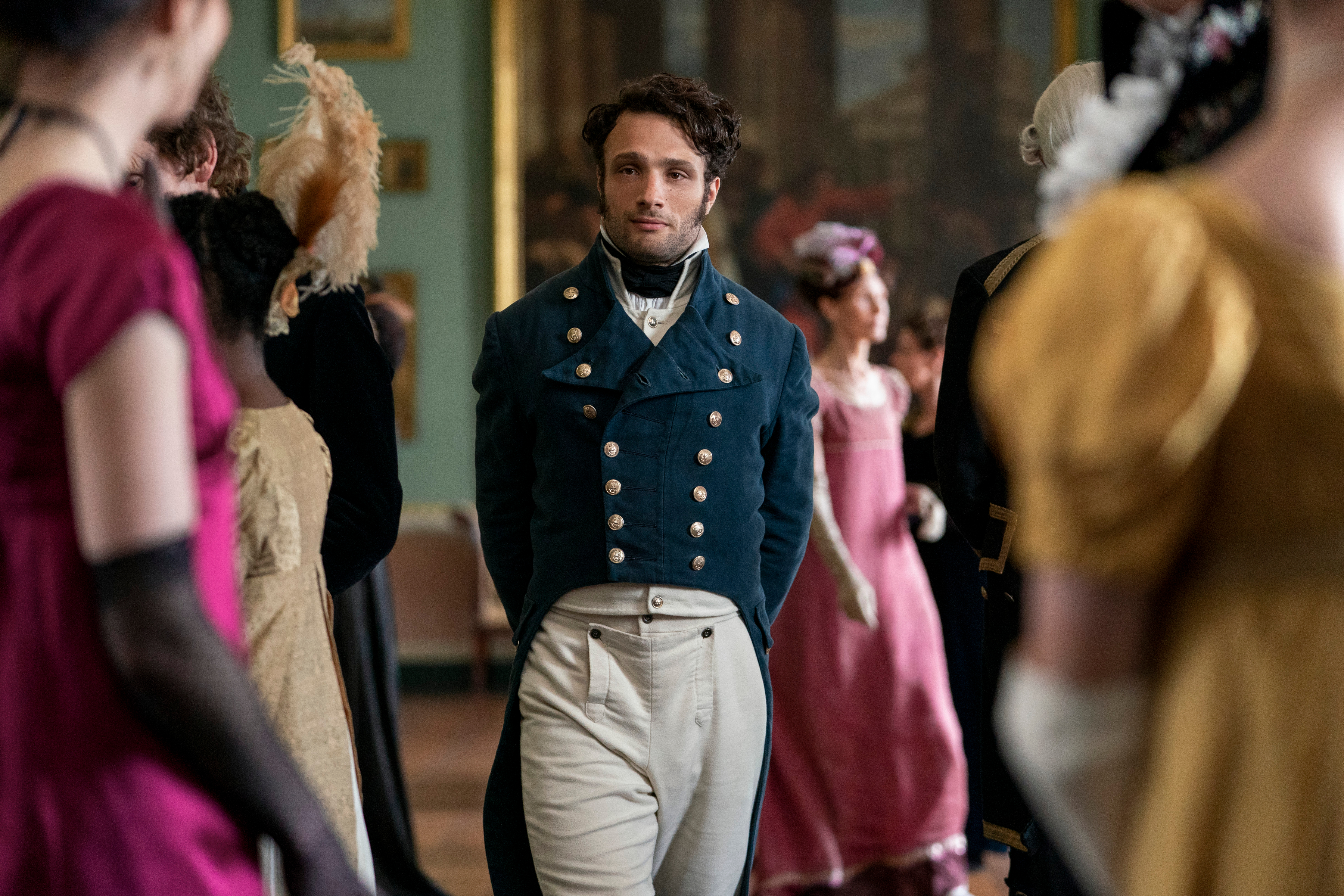
(l) Cosmo Jarvis (Captain Frederick Wentworth) is dressed in natural fabrics as befitting a seaman. His clothes are a little more ‘worn’ and less fastidious than that of Mr. Elliot, befitting a man rising in rank. This projects a warmth and accessibility. His colors reflect and complement that of his former love, Anne. Note all the specific hues within a color spectrum, each different yet compatible. The detail on the front of his trousers echoing that of the uniforms of the day.
(r) By contrast, in a formal setting, the fabrics are richer, the tailoring more specific. The placement of the buttons ever narrowing reflecting the V-shape of broad shoulders and narrow waist. The cravat is gone, though the multi-layering of coats visible at the neck. The trousers are interesting in that the flap bows away from the flat stomach revealing the fly closure it meant to conceal.
The hair is reminiscent of the Bedford crop popularized by the Duke of Bedford (1795).
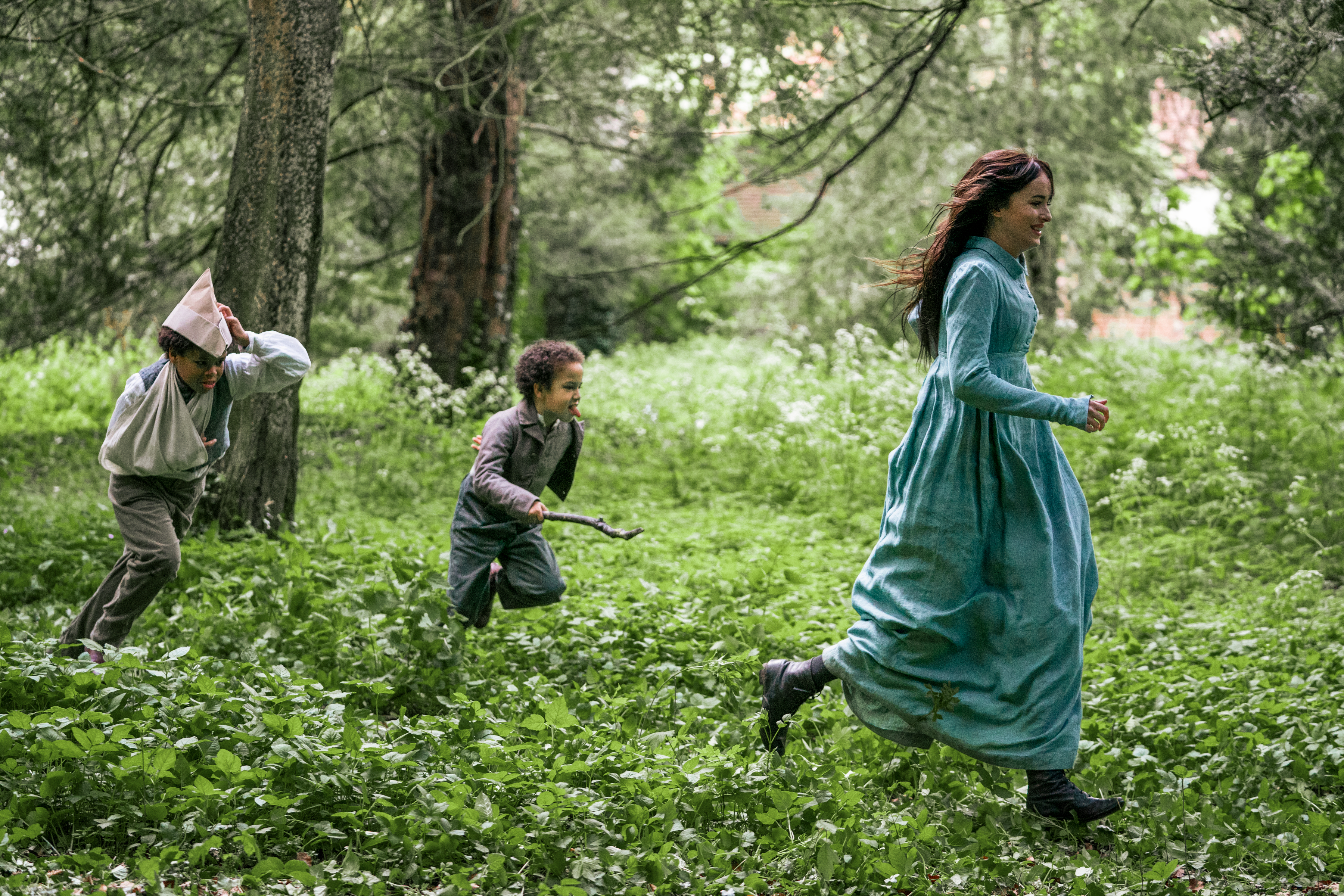
Despite the nine week prep and challenges Covid conjured in creating forced self isolation for the costume team, the mood boards produced inspiration from Debbie Harry – boots and jackets, the shirting – Patti Smith, and Audrey Hepburn in those jackets with the delicate shoulders. (Vogue).
In keeping with the practicality of the era, shoes were often flat of the ballet variety, with ribbons around the ankles, hand painted or garnished. Here, we see how the clothing colors often reflect the scene. Note the boots flat, practical, with a touch of modern, or does it feel modern because we are so accustomed to fashion’s retro homage?
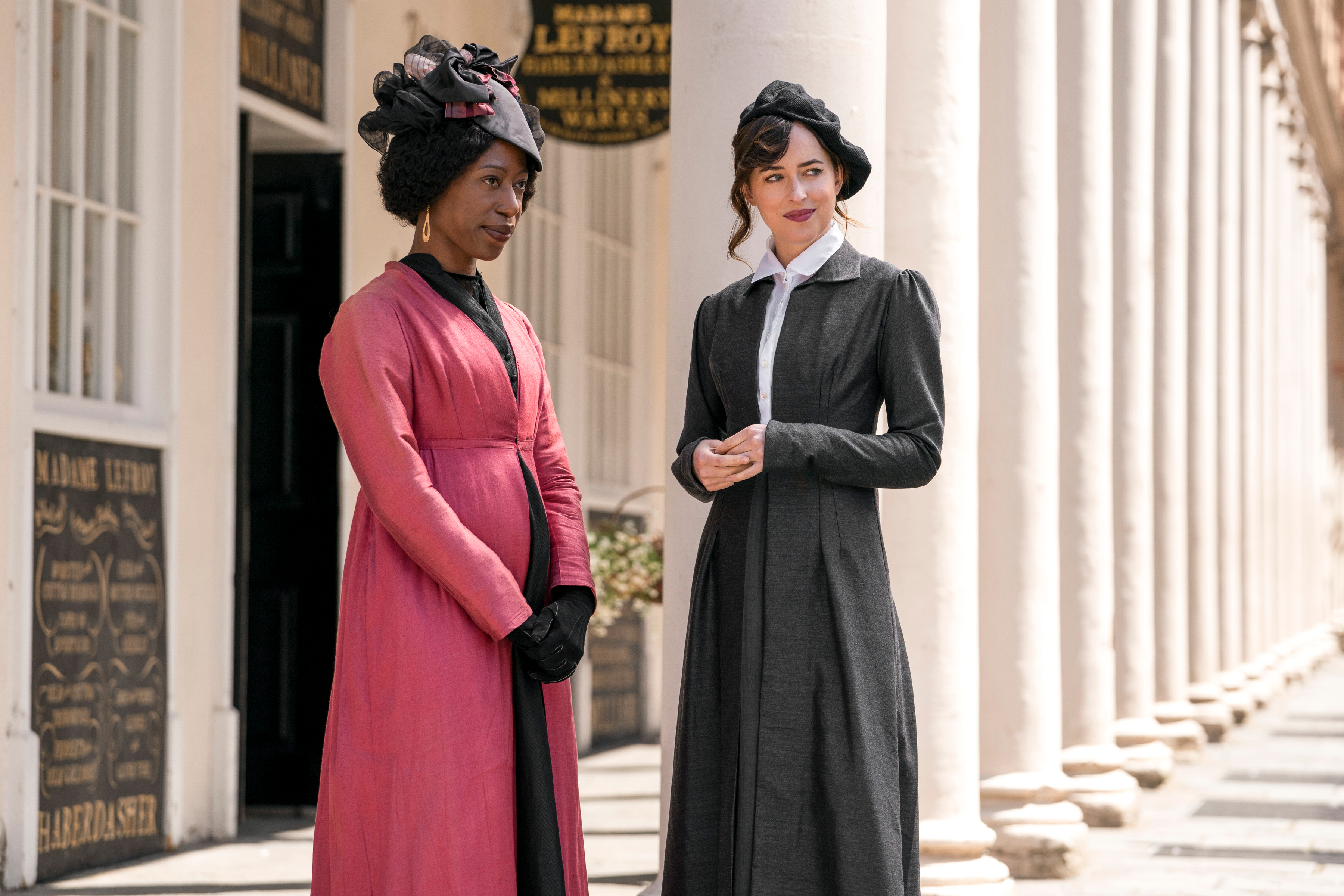
Nikki Amuka Bird’s character, the Lady Russel, is responsible for Anne’s discard of her true love. Lady Russel has had a huge effect on Anne Elliot, taking on the role of Anne’s deceased mother on the death of her friend. For her part, Anne has subconsciously emulated this woman who means so much to her, as seen in their similar and under-stated style.

